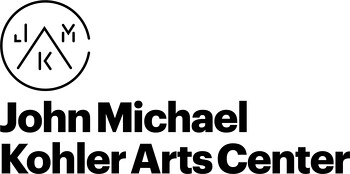March 21, 2021–March 13, 2022
608 New York Ave
Sheboygan, Wisconsin 53081
United States
Hours: Tuesday–Friday 10am–5pm,
Thursday 10am–8pm,
Saturday–Sunday 10am–4pm
T +1 920 458 6144
F +1 920 458 4473
contact@jmkac.org
Artists: Danielle Andress, Conrad Bakker, E. Winslow Funaki, Diana Guerrero-Maciá, Melissa Pokorny, Jade Yumang
Nearly 40 years ago, futurist John Naisbitt coined the term “high touch” in his 1982 book, Megatrends: Ten New Directions Transforming Our Lives. He defined it as humankind’s counterbalancing response to the impersonal nature of technology, or high tech.
Naisbitt claimed that the appropriate reaction to more technology is not to stop it, but to accommodate it, respond to it, and shape it.
High Touch brings together six artists who embrace technology as a medium and tool to research, ideate, and assemble intensely handcrafted, resolutely analog artworks. Whether sourcing images from the internet’s endless scroll or using digital processes to fabricate components of their works, they create highly tangible objects that transform the virtual into the physical.
The works in the exhibition are also unified by their ability to prompt a haptic response in the viewer—a palpable, tactile form of perception that engages senses beyond the optic. They elicit visceral and psychological reactions that are triggered by closeness and proximity, and provide the immediate experience of texture, scale, and mass that is possible only in person. High-touch art invokes the body through nearness, asserts its physicality, and evokes emotion. It invites us to see more, to hear more, to feel more.
Danielle Andress’s work places fast and rapidly circulated images into conversation with the slowness of weaving and the permanence of synthetic materials. Drawing from meme culture, social media, and stock images, her nonfunctional weavings investigate our relationships with consumable images and objects.
The hand-carved and painted wood sculptures that comprise Conrad Bakker’s ongoing Untitled Projects series explore how objects function beyond their visual and physical state of being. The laborious processes he uses to create these simulations of everyday objects point to the physical act of their making, while their placement in consumer contexts and art exhibitions emphasizes the political economies and relational networks between people and things.
E. Winslow Funaki’s works in sculpture, video, and furniture design inhabit the gray area of identity and dissolve the line between art and design. Funaki uses scraps, castoffs, and leftover materials to create “in-between” objects that, at first appear strange and placeless but whose form and function become more familiar through physical proximity and close looking.
Grounded in both the ethos of making and the expanded field of painting, Diana Guerrero-Maciá’s “unpainted pictures” are collage-based textile mash-ups that sample from her experiences as a Latinx child of Cuban exiles and engage the intimate history of handwork. She transforms upcycled and hand-dyed textiles into hybrid works that occupy the slow space of making and destabilize the modernist grid by considering it through an empathetic, human lens.
Jade Yumang focuses on the concept of queer form through sculptural abstraction and uses craft and fiber techniques as a haptic approach to world making. The soft, fabric-based sculptures from his Open House Spatter series—which are rooted in research documenting shifting views on queer culture in the 20th century—call attention to and retell moments in this history by giving physical form to archival materials.
Melissa Pokorny creates sculptural works that question ways of knowing the world and illuminate the invisible, intangible, and knotty attachments between temporal, geographical, and physical things. Her mixed-media assemblages transform a constellation of materials into objects that are strongly attached to and defined by their connection to place and time.
In our hyper-mediated, screen-based existence, real-world encounters with artworks provide an antidote to the flattened experience of digital life. Situated where craft and technology intersect, where materials end and sensation begins, High Touch reminds us of the radical, transformative power of art, and of art’s ability to touch us.
This exhibition is supported by the Kohler Trust for Arts and Education, the Frederic Cornell Kohler Charitable Trust, Kohler Foundation, Inc., Herzfeld Foundation, and the Wisconsin Arts Board with funds from the State of Wisconsin and the National Endowment for the Arts.








